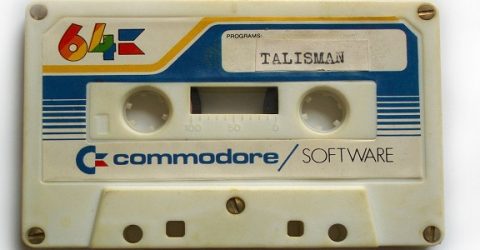How computer storage has evolved

Computers have been saving data onto storage devices for almost a century.
Primitive types of magnetic drum memory were developed in Austria in the 1930s, providing the primary form of storage to post-war computers.
Since then, a seemingly endless roster of storage media has come – and largely gone.
It’s often possible to gauge someone’s age by the equipment they remember using in their youth.
But how did people save digital content in the days before they uploaded everything to the cloud via broadband?
Magnetic attraction
Magnetism underpinned most early computer storage solutions, including drum memory, where data was stored on the outside of a rotating cylinder coated in ferromagnetic material.
Post-war engineers dabbled with vials of mercury and paper tape reels – a version of the punch cards still utilised by clocking-in machines in the Noughties.
However, the arrival of two competing media in the early 1950s began a battle which would rage until the 1990s.
In 1952, IBM unveiled its 726 magnetic tape system. Capable of storing two million digits per tape, it used vacuum technology to keep a reel of tape in motion between two spindles.
Four years later, the same company pioneered the world’s first hard disc drive, with 50 metal platters holding almost three times as much data as the 726.
Crucially, the presence of so many individual discs facilitated rapid access to certain portions of data – the first example of random access memory, or RAM.
That shrinking feeling
Portability inspired many improvements in the size of computer storage devices, as reel-to-reel cartridges and eight-inch floppy disc drives emerged in the Sixties.
By 1970, semiconductor technology was replacing magnetic cores with a more efficient and lightweight medium.
A few years later, memory chips made their debut courtesy of Intel. They initially stored a solitary kilobyte of data, but within two years, 64K RAM chips were being made in Japan.
Contrary to popular opinion, compact cassettes were first adapted for computer storage in the 1970s.
Their rise to prominence was largely thanks to the low-cost design of 1980s home computers, though programs of the era didn’t even need a fraction of a cassette’s total capacity.
As well as cassettes, the early Eighties heralded the first microcomputer hard disc drive, plus the arrival of 3.5-inch floppy discs.
By the 1990s, solid state disk technology (SSD) was hinting at device portability, replacing fragile spinning hard discs with robust and non-volatile memory chips.
Without this development, USB flash drives wouldn’t have debuted in 2000, while today’s tablets and smartphones may not exist at all.
Failed creations
Of course, nobody knew at the time whether a particular invention would prove to be successful.
The Sinclair QL business computer used a proprietary microdrive system, whose tiny cartridges were unreliable and prone to warping.
High-density Zip drives were also undone by reliability problems. Plus, the 100MB capacities of basic models paled by comparison with the 700MB contained on a standard CD-ROM.
Intel’s bubble memory was a high-profile flop, and the 12-inch Philips LaserDisc never caught on despite high-profile marketing campaigns promoting its storage capabilities.
Nonetheless, the technology behind LaserDisc would later be adapted for CDs and DVDs, with rewritable versions bringing high-density data storage to Millennial PCs and Macs.
A cloudy forecast
Arguably the biggest single shift in data storage involves remote file access in the cloud.
Improving internet speeds and the prevalence of cheap online server space has driven files away from devices in a way not seen since the ‘dumb terminal’ computers of the 1980s.
Consumers are now used to storing and accessing data in the cloud, rather than saving it locally.
Dropbox, Google Docs and Facebook are all platforms where remotely stored user-generated content is only accessible via an internet connection.
Cloud storage lets consumers access data from any internet-enabled machine without the risk of it being lost or corrupted – or ending up siloed on an obsolete storage medium.
It’s impossible to calculate how many files have been saved onto Zip discs and cassettes, which will never be accessed again due to a lack of working hardware.
Future generations might marvel at the 20th century’s plethora of incompatible computer hardware, but universal cloud access simply wasn’t a practical alternative until recently.
Today, it’s hard to imagine life without it.






